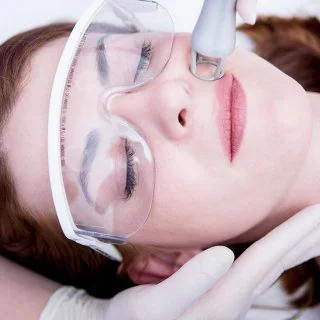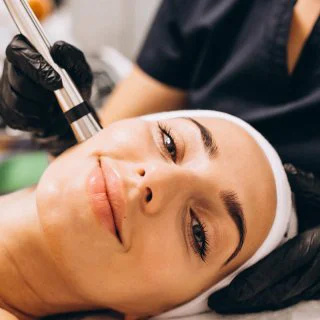
NOSE AESTHETICS
Rhinoplasty surgery, in which the nose is reshaped, is among the most preferred operations in plastic surgery. Regardless of gender, everyone is interested in these operations to correct respiratory problems and change the shape of the nose. Whether the deformities in the nose structure are congenital or occur later, it is possible to correct them through rhinoplasty surgery. This operation aims to aesthetically correct the nose and preserve nasal functions.
Who are the Most Suitable Patients for Rhinoplasty?
This aesthetic operation improves the patients' appearance and increases their self-confidence. The nose shape that patients want and dream of before surgery cannot be created with this operation. All changes made in the nose structure are related to the person's nose structure. Therefore, patients' expectations come to the fore in rhinoplasty surgery. The success of the operation depends on the patient's expectations, their reasons for having the surgery, and what they expect as a result of the surgery. If patients convey their wishes to the surgeon correctly and if their wishes are feasible, the best results will be achieved. If patients are excessively perfectionist, a successful result cannot be achieved. Rhinoplasty success is achieved as long as patients are satisfied with the new nose shape, which will contribute positively to the external appearance. Let us point out that these candidates are the most suitable candidates for rhinoplasty. Candidates who have the spiritual development to handle the results obtained by surgery, who understand that surgery and getting results are a process, and who have completed their nose development can decide to have rhinoplasty surgery.
Are There Risks of Rhinoplasty Surgery?
Like every surgical intervention, rhinoplasty operations carry risks. Performing the operation by experienced rhinoplasty specialists is effective in reducing the risks. In addition, risks due to bleeding, infection, and anesthesia can always occur, as in other surgeries. Depending on the rhinoplasty technique, the scar left after the surgery will vary. Closed rhinoplasty can be completed without leaving visible scars. However, in open rhinoplasty surgery, minimally visible scars may remain. There may be a need for revision surgery after the operation. Although this rate is at the level of 10 - 25% in the literature, this should be taken into consideration as a risk. If the patient has a nose shape that he or she is not happy with or if there is respiratory distress, a new surgery may be performed.
Before Rhinoplasty Surgery
Patient and doctor communication is of great importance in the success of the operation. We advocate that our communication and spiritual bond with our patients affects the operations positively. A patient who conveys his wishes correctly to his doctor will enable us to be more successful in the operation. The patient who correctly conveys the nose shape he wants to have after the surgery will help us create the nose shape that suits his face shape. In the evaluations before the surgery, the patient's bone and cartilage tissue, face shape, skin structure, skin thickness, age and the patient's expectations from the surgery are taken into consideration. Thus, the patient is informed about the method to be used, where the operation will be performed, the price of the operation and possible risks. Regulations are made regarding the patient's habits and the medications he uses. Plans such as nutrition program, smoking cessation, medication rearrangement, and vitamin support are made.
Type of Anesthesia Used in Rhinoplasty Surgery
During the operation, local anesthesia can be used in accordance with the procedures to be performed on the nose structure, or general anesthesia can be preferred. In practice, general anesthesia is generally preferred. Although the patient does not feel any pain in either case, it is common to prefer general anesthesia to ensure comfortable movement for the surgeon and to prevent discomfort for the patient.
Frequently Asked Questions
Should I have a rhinoplasty operation?
If you are not happy with the harmony and proportion of your nose to your face and you have social difficulties, YES, you can have a "Rhinoplasty" operation.
What should be taken into consideration before the operation?
You should share all your expectations and concerns with your doctor during your examination. During the examination, you should answer in detail the information you will be asked about your general health condition and inform your doctor about the disease you have and the medications you use.
How will the operation be?
It is important to be over 18 years old for the operation, it is performed under general anesthesia. The average duration varies between 1-3 hours, you need to stay in the hospital overnight.
What is important to know about anesthesia?
Before the rhinoplasty operation, you will be examined and informed by the anesthesiologist. Factors that affect anesthesia, such as blood thinners, vitamins, alcohol and smoking, should be discontinued as of the date prescribed by your doctor.
Return to social life after the operation
A silicone tampon is applied to facilitate breathing, and a splint is placed on the outside of the nose to protect it from external factors. The tampon is removed after two days, and the splint is removed after 7 days. After the operation, mild bruising and edema are expected, which will disappear quickly. Lying with your head elevated and ice compresses will be beneficial. One week after the operation, you will look like you have had almost no surgery. It is recommended not to use glasses for 3 months.
Get Information About Rhinoplasty Applications
To get more information about rhinoplasty applications, you can take the first step by filling out the form below. Rhinoplasty involves a series of surgical and non-surgical procedures aimed at making people's noses more attractive and balanced or correcting functional problems. This form is an important step in giving you more information about rhinoplasty, providing answers to your questions, and connecting you with a specialist.









